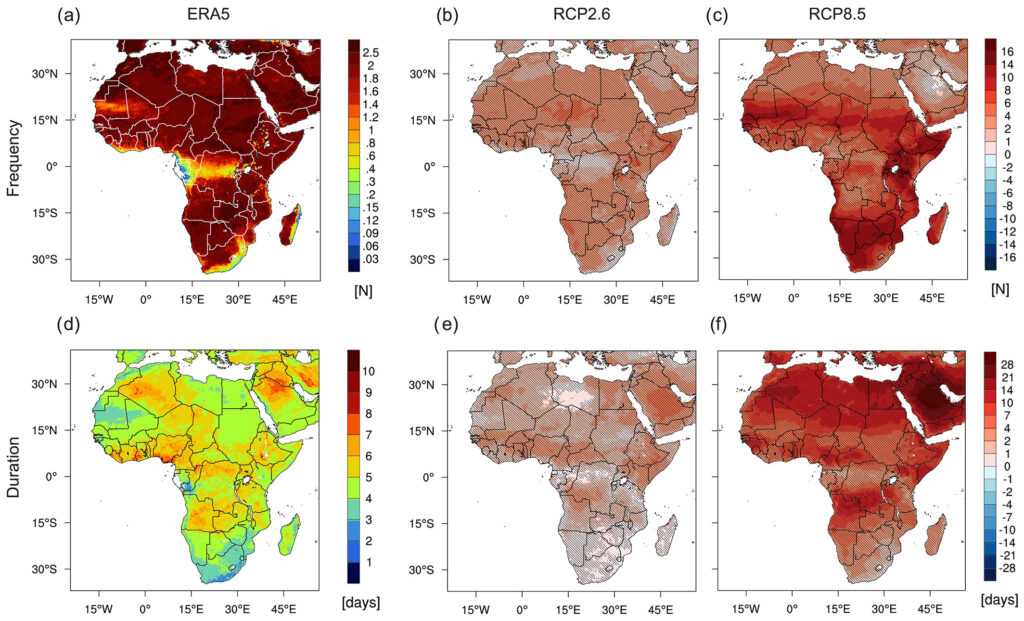Abstract
It is well established that Africa is particularly exposed to climate extremes including heat waves, droughts, and intense rainfall events. How exposed Africa is to the co‐occurrence of these events is however virtually unknown. This study provides the first analysis of projected changes in the co‐occurrence of five such compound climate extremes in Africa, under a low (RCP2.6) and high (RCP8.5) emissions scenario. These changes are combined with population projections for a low (SSP1) and high (SSP3) population growth scenario, in order to provide estimates of the number of people that may be exposed to such events at the end of the 21st century. We make use of an ensemble of regional climate projections from the Coordinated Output for Regional Evaluations (CORE) project embedded in the Coordinated Regional Climate Downscaling Experiment (CORDEX) framework. This ensemble comprises five different Earth System Model/Regional Climate Model (ESM/RCM) combinations with three different ESMs and two RCMs. We show that all five compound climate extremes will increase in frequency, with changes being greater under RCP8.5 than RCP2.6. Moreover, populations exposed to these changes are greater under RCP8.5/SSP3, than RCP2.6/SSP1, increasing by 47‐ and 12‐fold, respectively, compared to the present‐day. Regions of Africa that are particularly exposed are West Africa, Central‐East Africa, and Northeast and Southeast Africa. Increased exposure is mainly driven by the interaction between climate and population growth, and the effect of population alone. This has important policy implications in relation to climate mitigation and adaptation.
Plain Language Summary
It is well known that Africa is exposed to a range of different climate hazards including droughts, heat waves, and extreme rainfall events, which cause major social and economic suffering. It is, however, largely unknown how exposed the African population is to the co‐occurrence of such climate hazards. This is important because compound events will likely increase the suffering far and above that caused by individual climate hazards. In this study, we provide an analysis of potential changes in five different compound events, and the exposure of the African population to them, at the end of this century. Combining exposure to all compound events, the results show that compared to the present‐day, the exposure of the African population may increase by 12‐ and 47‐fold in the best‐ and worst‐case scenarios, respectively. The spatial distribution of changes shows that West Africa and central and eastern regions of Africa may be particularly exposed. Increased exposure is mainly caused by the interaction between climate and population growth, and the effect of population alone. These results imply that any policy response designed to reduce exposure needs to address both climatic and socioeconomic factors.

Weber, T., Bowyer, P., Rechid, D., Pfeifer, S., Raffaele, F., Remedio, A. R., … & Jacob, D. (2020) Analysis of Compound Climate Extremes and Exposed Population in Africa under two different Emission Scenarios. Earth’s Future, e2019EF001473. Go to article
